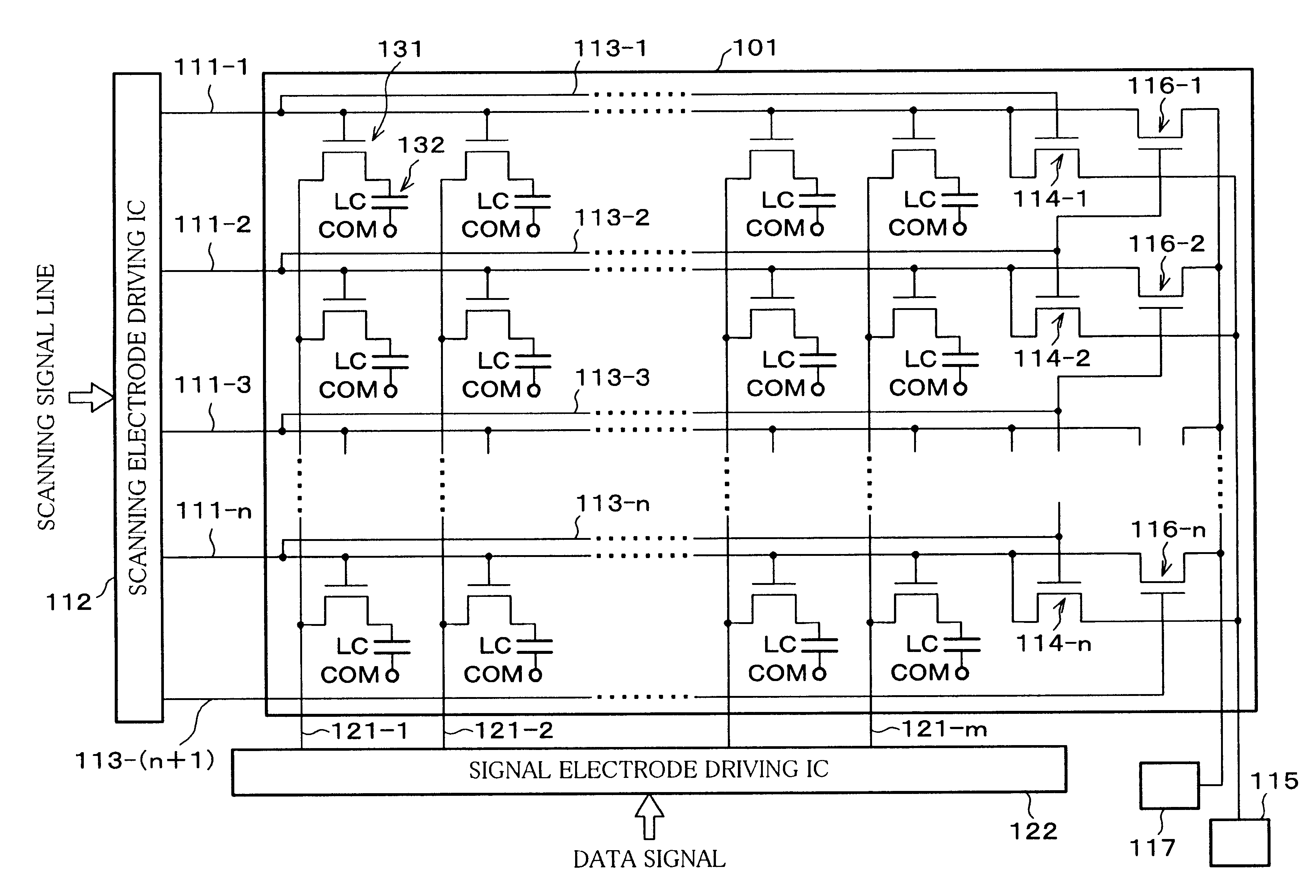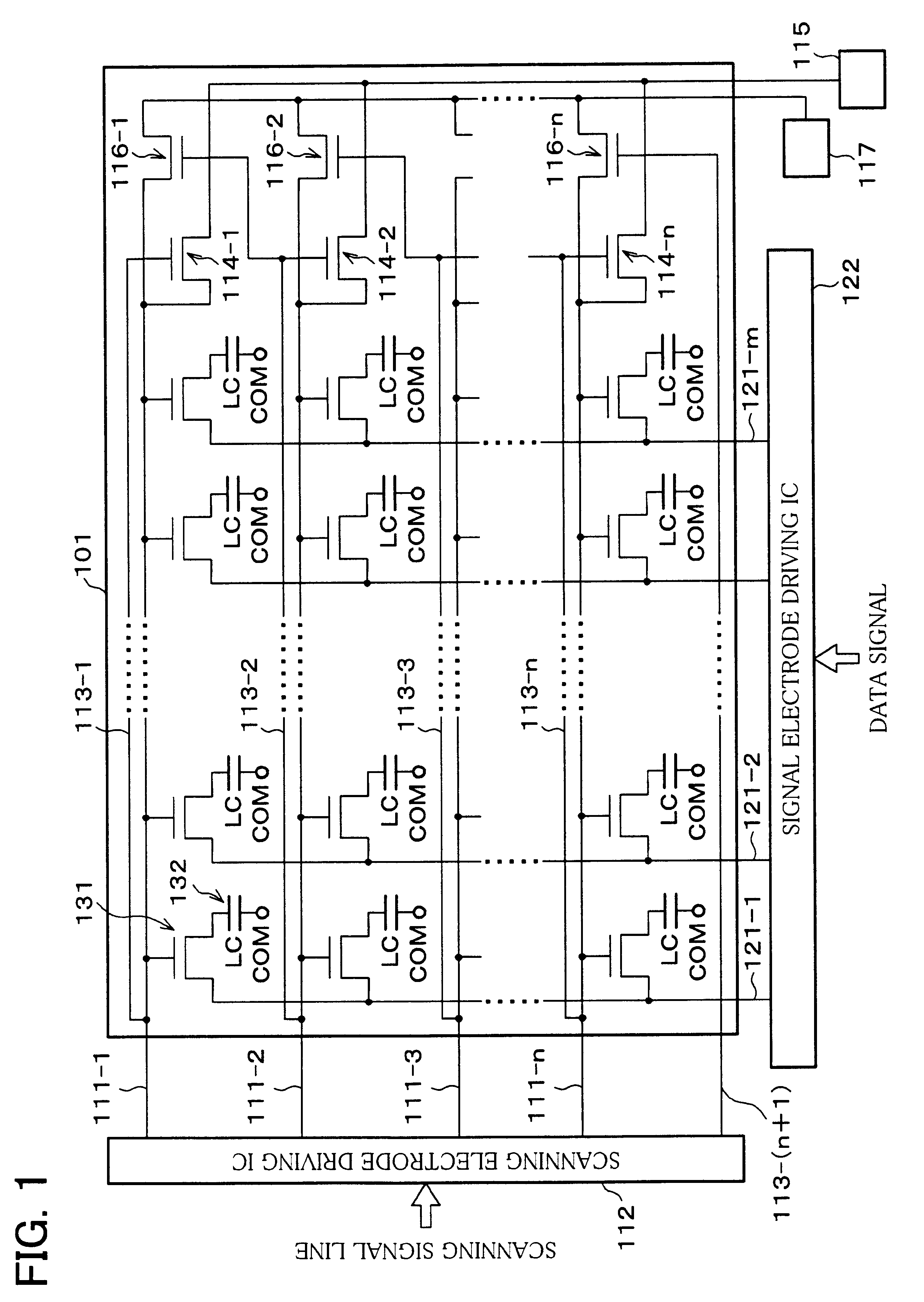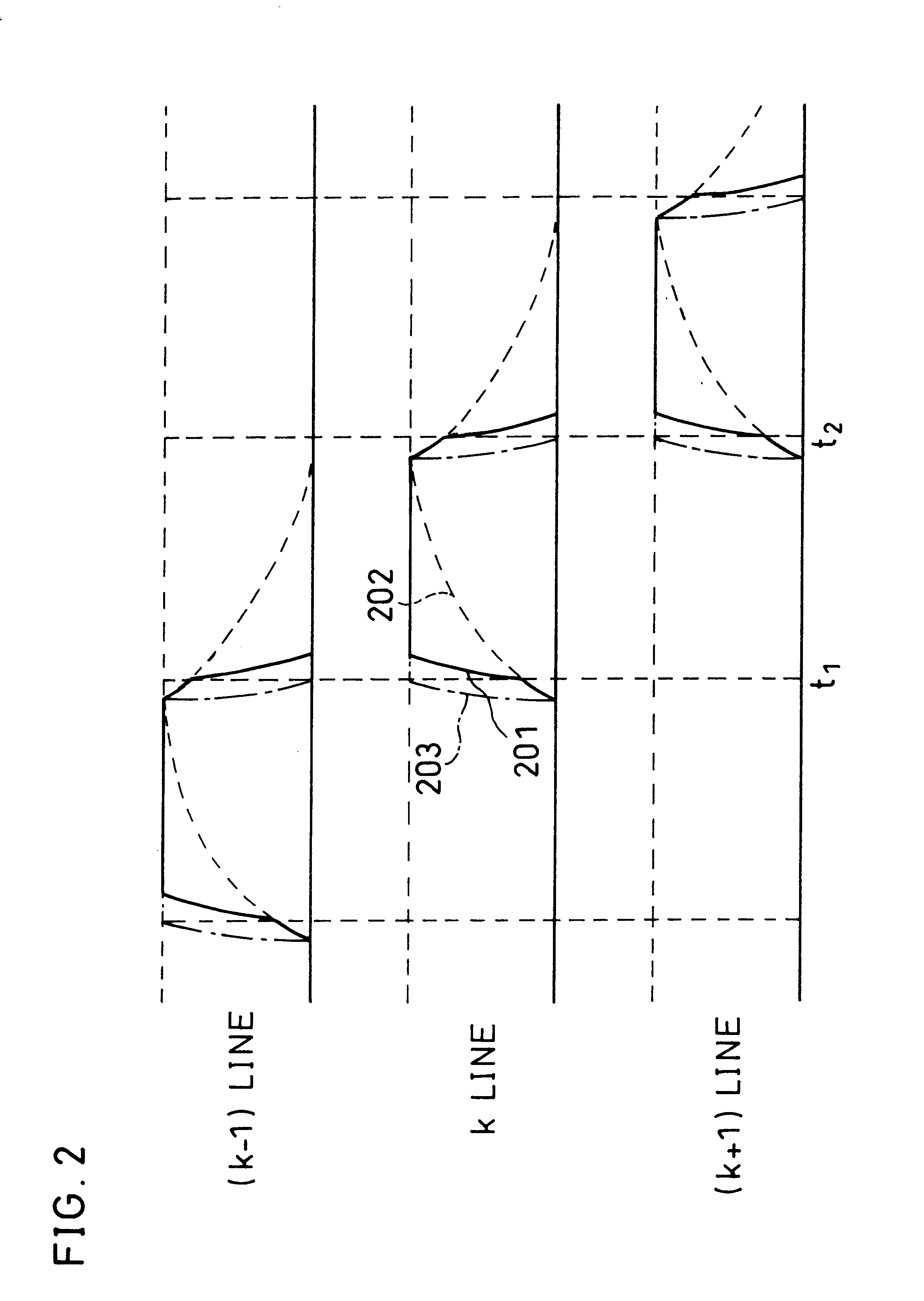Image display device
a display device and image technology, applied in the field of display devices, can solve the problems of high-definition liquid crystal display devices, increase in scanning lines, and pixels contrast, and achieve the effects of suppressing a driving voltage waveform, suppressing a cost increase, and preventing erroneous writing
- Summary
- Abstract
- Description
- Claims
- Application Information
AI Technical Summary
Benefits of technology
Problems solved by technology
Method used
Image
Examples
Embodiment Construction
The following will explain one embodiment of the present invention with reference to drawings.
FIG. 1 shows a circuit configuration of a liquid crystal display device according to the present embodiment. As shown in FIG. 1, the liquid crystal display device includes, within a display panel 101, scanning lines 111-1 to 111-n and signal lines 121-1 to 121-m disposed in a lattice state, and a liquid crystal pixel 132 connected at a crossing point of a scanning electrode and a signal electrode via a pixel TFT 131. Further, with respect to the scanning lines 111-1 to 111-n and the signal lines 121-1 to 121-m are respectively connected a scanning electrode driving IC 112 and a signal electrode driving IC 122.
Further, on one side of the display panel 101 closer to the scanning electrode driving IC 112, the scanning lines 111-1 to 111-n are respectively connected with scanning auxiliary lines 113-1 to 113-n having smaller wiring resistance and allowing less growth of a dull signal (smaller s...
PUM
 Login to View More
Login to View More Abstract
Description
Claims
Application Information
 Login to View More
Login to View More - R&D
- Intellectual Property
- Life Sciences
- Materials
- Tech Scout
- Unparalleled Data Quality
- Higher Quality Content
- 60% Fewer Hallucinations
Browse by: Latest US Patents, China's latest patents, Technical Efficacy Thesaurus, Application Domain, Technology Topic, Popular Technical Reports.
© 2025 PatSnap. All rights reserved.Legal|Privacy policy|Modern Slavery Act Transparency Statement|Sitemap|About US| Contact US: help@patsnap.com



